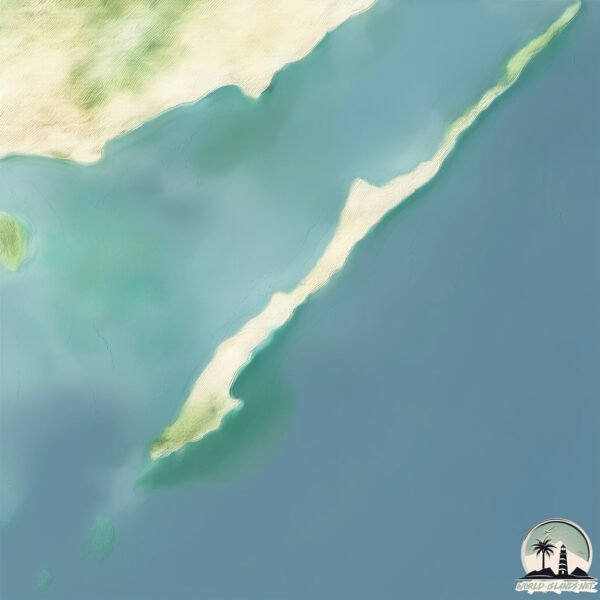Welcome to Jofay , a Tropical island in the Indian Ocean, part of the majestic Indian Ocean. This guide offers a comprehensive overview of what makes Jofay unique – from its geography and climate to its population, infrastructure, and beyond. Dive into the details:
Geography and size of Jofay
Size: 5.051 km²Coastline: 23.1 kmOcean: Indian OceanSea: Indian OceanContinent: Africa
Jofay is a Small Island spanning 5.1 km² with a coastline of 23.1 km.
Archipel: –
Tectonic Plate: Sunda – Extends across Southeast Asia, encompassing parts of the Sunda Shelf, known for its interaction with the Australian Plate, contributing to volcanic activity in Indonesia.
The geographic heart of the island is pinpointed at these coordinates:
Climate and weather of Jofay
Climate Zone: TropicalClimate Details: Tropical Savanna, WetTemperature: Hot
Climate Characteristics: Defined by distinct wet and dry seasons with high temperatures year-round. Pronounced rainfall occurs during the wet season, while the dry season is marked by drought.
Topography and nature of Jofay
Timezone: UTC+03:00Timezone places: Asia/RiyadhMax. Elevation: 7 m Mean Elevation: 3 mVegetation: Sparse VegetationTree Coverage: 57%
The mean elevation is 3 m. The highest elevation on the island reaches approximately 7 meters above sea level. The island is characterized by Plains: Flat, low-lying lands characterized by a maximum elevation of up to 200 meters. On islands, plains are typically coastal lowlands or central flat areas.
Dominating Vegetation: Sparse Vegetation
Vegetation: 5 vegetation zones – Highly Diverse Island
Infrastructure and Travelling to Jofay
Does the island have a public airport? no .
Does the island have a major port? no .
The mean population of Jofay is 28 per km². Jofay is Gently Populated. The island belongs to Somalia .
Continuing your journey, Uvondo Island is the next notable island, situated merely km away.
Belgian Coffee Maker- Luxury Belgium Balance Brewer and Coffee Syphon Royal Brass Siphon Brewer
The Belgian Balance Brewer will deliver the best tasting coffee. Coffee grounds are placed in the glass chamber, while the water ...
Belgian Coffee Maker- Luxury Belgium Balance Brewer and Coffee Syphon Royal Brass Siphon Brewer
The Belgian Balance Brewer will deliver the best tasting coffee. ...
The Belgian Balance Brewer will deliver the best tasting coffee. Coffee grounds are placed in the glass chamber, while the water ...
Joyfay Outdoor Single Tunnel Inflatable Transparent Bubble Camping Family Tent
This Bubble Tent by Joyfay is just what you need to keep your kids ...
This Bubble Tent by Joyfay is just what you need to keep your kids busy while you relax. The bubble tent is easy to erect. All you ...
A Quick Get Ready With Me + Press on nail from Jofay Fashion
Jofay Fashion press on nails link: ...
Jofay Fashion press on nails link: ...
Somalia is classified as Least developed region: Countries that exhibit the lowest indicators of socioeconomic development, with the lowest Human Development Index ratings. The level of income is Low income.
News – Latest Updates and Headlines from Jofay
Stay informed with the most recent news and important headlines from Jofay. Here’s a roundup of the latest developments.
Loading...
Please note: The data used here has been primarily extracted from satellite readings. Deviations from exact values may occur, particularly regarding the height of elevations and population density. Land area and coastline measurements refer to average values at mean high tide.

